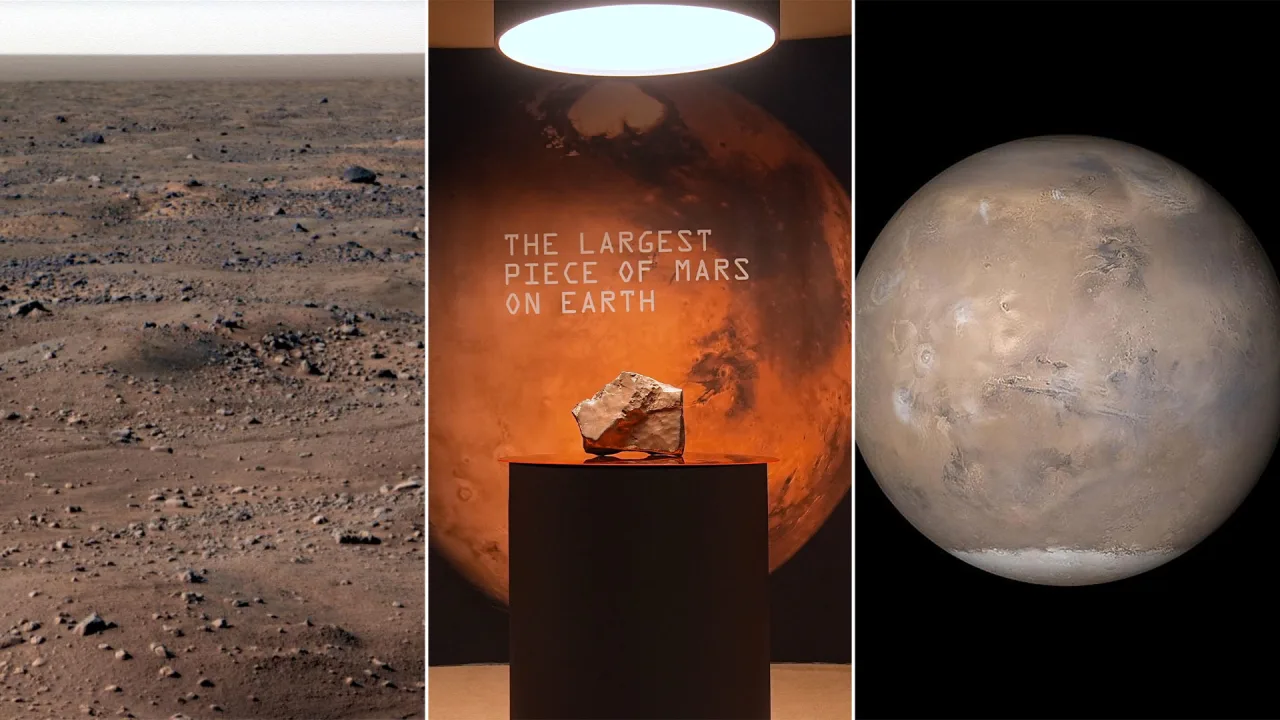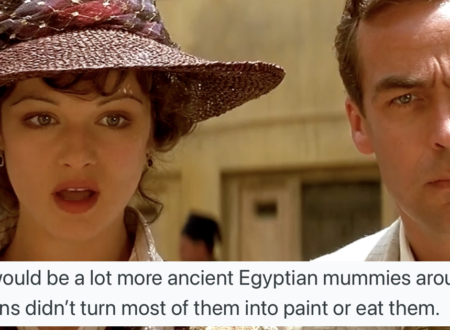One of the most mysterious rocks on Earth just went up for sale

If you didn’t make the list for Blue Origin’s recent sub-orbital jaunt to space, why not treat yourself to a consolation prize here on Earth for a fraction of the cost?
On Wednesday, Sotheby’s will auction off a chunk of rock believed to have originated on Mars for an anticipated two to four million dollars – a steal relative to the $28 million you would have dropped to experience a few fleeting minutes of zero gravity with Katy Perry.
The meteorite, dubbed NWA 16788, is thought to be the biggest piece of the red planet present here on Earth. The reddish hunk of rock was discovered by a meteorite hunter in the remote sand dunes of Northern Niger in November 2023 and in geological terms is known as an “olivine-microgabbroic shergottite.” Most Martian meteorites that fall to Earth are categorized as shergottites, named after a meteorite that fell in Sherghati, India in 1865.
The meteorite weighs 54 pounds and contains a kind of glass known as maskelynite, which forms when feldspar in the rock was exposed to extreme pressure and heat, likely from an asteroid impact that knocked it off the Martian surface to begin with. Beyond the space glass, the rock is mostly made up of pyroxene and olivine, common meteorite minerals that are also present in the layer of the Earth’s crust known as the upper mantle. Based on its condition and lack of weathering, NWA 16788 appears to be a relative newcomer to planet Earth, found not long after it traveled through space to the Sahara.
“NWA 16788 is covered in a reddish-brown fusion crust giving it an unmistakable Martian hue,” the Sotheby’s posting states. “Regmaglypts, or surface depressions formed by frictional heating during rapid descent through Earth’s atmosphere, are also visible on the surface of the meteorite.”
Chipping away at Martian mysteries
Out of the more than 77,000 meteorites logged so far, only 400 have their origins on Mars. To confirm the rock’s Martian origins, a lab compared its chemical makeup with atmospheric data collected by NASA’s Viking probe, which landed on the surface of Mars in 1976. That mission, which sent a pair of identical spacecraft to study the Martian surface, collected information on the red planet that remains valuable today.
“Almost everything about Viking was the first time we had ever tried it,” Smithsonian National Air and Space Museum Curator of Planetary Science Matt Shindell said in a retrospective on Viking’s impact. “NASA had never landed on another planet. They had never built a miniature laboratory. No one had ever built a computer that could withstand any of the stresses that Viking was under. The engineers had to design things that were never done before.”
The record-setting Martian meteorite isn’t the only artifact Sotheby’s will auction off that would be more appropriate in a natural history museum. The auction house will also host the sale of a Jurassic-age juvenile ceratosaurus skeleton for an estimated $6 million and a T-rex foot from the late Cretaceous for a starting bid of $300,000. The fossils were excavated in Wyoming and Montana, respectively.
If dinosaur fossils and far-flung space rocks are too rich for your blood, a Neolithic stone axe found in France will also pop up for sale on Wednesday for a modest starting bid of $5,500. If you do end up springing for the meteorite, know that your bragging rights are very secure – your rock will be 70% larger than the next-largest known piece of Mars on our planet.
What's Your Reaction?
 Like
0
Like
0
 Dislike
0
Dislike
0
 Love
0
Love
0
 Funny
0
Funny
0
 Angry
0
Angry
0
 Sad
0
Sad
0
 Wow
0
Wow
0








.jpg)

.jpg)



















































































